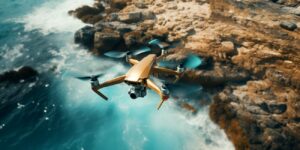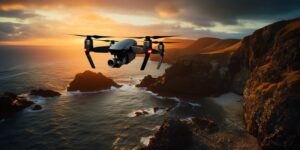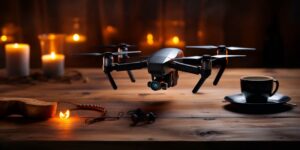Welcome to our comprehensive guide on drón propellers! In this article, we will delve into the world of dróns and explore the crucial role that propellers play in their functionality. Whether you’re a seasoned drón enthusiast or just starting your journey into the world of unmanned aerial vehicles, this guide will provide you with valuable insights and information.
Understanding drón propellers
Dróns, also known as drones or UAVs (Unmanned Aerial Vehicles), rely heavily on their propellers for lift, propulsion, and stability. These small yet powerful devices are responsible for generating the thrust needed to keep a drón airborne and maneuver it in different directions. Let’s take a closer look at the key aspects of drón propellers:
1. types of drón propellers
Drón propellers come in various shapes and sizes, each designed for specific purposes. The two main types of drón propellers are:
- Quadcopter Propellers: These are the most common type of drón propellers and are used in quadcopter drones. Quadcopters typically have four propellers arranged in a square configuration.
- Multirotor Propellers: Multirotor drones can have more than four propellers, and the configuration can vary. Some popular multirotor types include hexacopters (six propellers) and octocopters (eight propellers).
2. propeller materials
Drón propellers are usually made from one of the following materials:
- Plastic: Most consumer-grade drón propellers are made of lightweight plastic. They are cost-effective and suitable for beginners.
- Carbon Fiber: Carbon fiber propellers are stronger and more durable than plastic ones. They are often used in high-performance and professional-grade drones.
Choosing the right propellers
When it comes to selecting the right propellers for your drón, several factors come into play:
1. drón type
The type of drón you have will dictate the compatible propellers. Make sure to choose propellers that are designed for your specific drón model.
2. purpose
Consider your intended use for the drón. Are you flying for photography and videography, racing, or simply for recreational purposes? Different propellers excel in various applications.
3. size and pitch
Propellers are characterized by their size (diameter) and pitch (angle of the blades). Larger propellers generally provide more thrust, while a higher pitch can increase speed but may require more power.
Maintaining your drón propellers
Proper maintenance is crucial to ensure the longevity and performance of your drón propellers:
1. regular inspection
Inspect your propellers for signs of wear and damage. Replace any damaged or cracked propellers immediately to avoid accidents.
2. cleaning
Keep your propellers clean from dirt, debris, and residue. A dirty propeller can reduce efficiency and affect flight stability.
Faqs
Q1: can i upgrade my drón’s propellers for better performance?
A1: Yes, upgrading your drón’s propellers can improve performance, but ensure they are compatible with your drón’s specifications.
Q2: how often should i replace my drón propellers?
A2: It depends on usage, but it’s a good practice to replace them if you notice any damage or significant wear.
Q3: do i need to balance my drón propellers?
A3: Balancing propellers can enhance flight stability, especially for high-end photography drones. You can use a propeller balancer for this purpose.
By now, you should have a solid understanding of drón propellers and their importance in the world of drón technology. Remember to choose the right propellers for your drón, maintain them regularly, and enjoy your drón flying experience to the fullest!
Vezi și:






